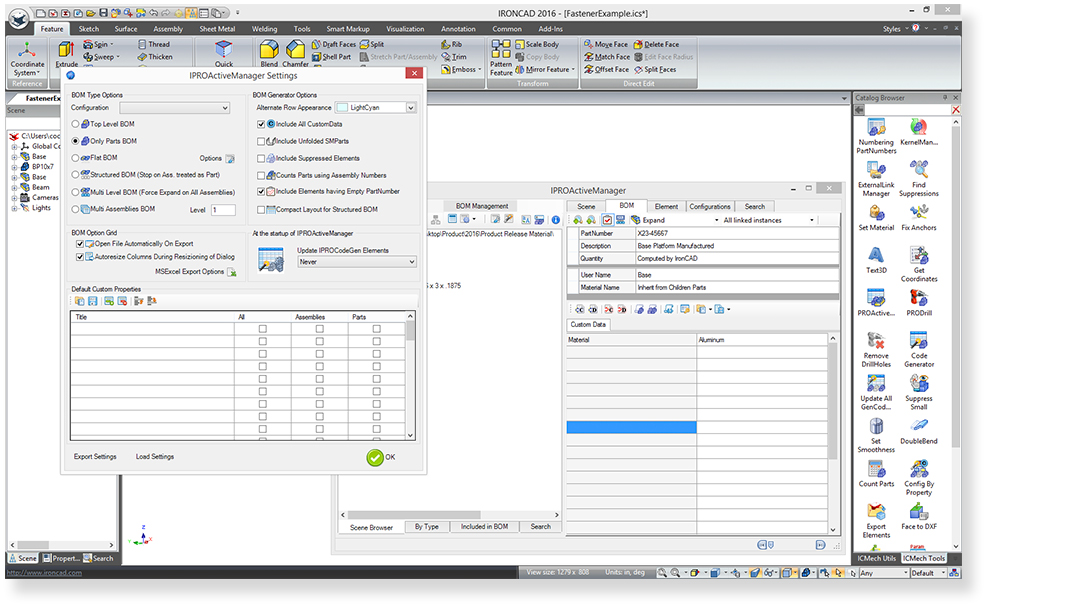

It’s going to be different for each of the 3D printing technologies in terms of what can get by and what can’t,” Utley explains. Next you figure out the limitations and design around it. You need to consider what material you want and then look at which 3D printing technology builds in that material. “You need to think about support structures as you’re designing. Education and consulting services are key, he says. “These constraints are commonplace with organic shapes and with metal AM practices,” Utley says. Likewise, untrained engineers may design parts with volumes that inadvertently trap powder material from the 3D printing process or have supports that are difficult, if not impossible, to remove. Designing a part so that it steps up incrementally and can be self supporting (instead of featuring long bridges or overhangs) is something engineers untrained in 3D printing techniques don’t necessarily understand, Utley says. Commonly used in AM processes, especially metal technologies, supports are typically scaffold or lattice-type structures required at certain angles to hold a part up as the detailed features are being built. Support structures, in particular, seem to present the biggest design challenges to customers, says Eric Utley, applications specialist at Proto Labs, a digital manufacturing source for custom prototypes and low-volume production parts. That’s pretty standard as far as metal printing processes go, but Toshiba Machine claims its prototype is over 10 times faster than existing AM systems. It has developed a metal printing process it calls laser metal deposition, which uses a laser in tandem with powdered material deposition to build layers. The company is staking its claim in AM through speed. It already has a working prototype and claims it will be ready for a 2017 launch date. Toshiba Machine, a subsidiary of Toshiba, has become the latest additive manufacturing (AM) outsider to announce it will be moving into the 3D printing arena. Optimizing a design for the materials used or for proper orientation on the build platform are other factors that need to be considered early on in the process, and there are myriad other constraints that may seem foreign to engineers acclimated to traditional manufacturing processes like casting, injection molding and stamping, experts say. With certain AM technologies, specifically Direct Metal Laser Sintering (DMLS), there are structural checks to ensure the technology used to build up the part doesn’t actually create stresses that result in part deformation, and ultimately, a bad build. Yet there are different constraints driven by the technology you’re using and the materials you are building with.” Out With the Old, In With the Newįor many 3D printing or additive manufacturing (AM) technologies, the biggest constraint is optimizing designs to minimize or eliminate support structures needed during the actual build process. “If you know you’re building a part with an additive manufacturing process, you don’t have to worry about undercuts, fillets or internal channels that go deep inside the part.
#IRONCAD DESIGN COLLABORATION SUITE 2016 KEYGEN GENERATOR SOFTWARE#
“In general, the talk about 3D printing technology delivering design freedom without the constraints of traditional manufacturing is true, for the most part,” says Tim Thellin, director of Software and Productivity Tools for Stratasys Direct Manufacturing. While traditional boundaries don’t necessarily apply in the world of 3D printing, engineers expecting an unfettered design environment will be in for a surprise. These next-generation designs are not only visually compelling, they are typically more aerodynamic, weigh less and boast fewer parts than designs crafted with traditional CAD tools for output using mainstream manufacturing practices. Yet to fully reap the benefits of this nicely matched pair, engineers need to master a set of new constraints to ensure designs can be produced in a reliable, cost-effective fashion.Īdvances in 3D printing technology-from new materials to higher resolution output capabilities-coupled with topology optimization and other design software improvements are empowering engineers to come up with freeform shapes and complex lattice structures that challenge conventional design limitations. T he dynamic duo of 3D printing and new optimization software is giving engineers the freedom to design and produce organic shapes and lightweight structures that raise the bar on ingenuity while delivering unprecedented savings. SOLIDWORKS 2016’s Print3D PropertyManager Settings tab includes the ability to change the model scale and to reorient the model to fit the print volume.


 0 kommentar(er)
0 kommentar(er)
